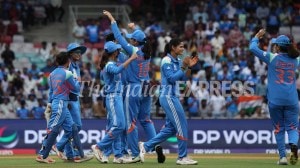Bapat gains a comfortable edge, NCP has the largest share
PUNE, Oct 21: Bharatiya Janata Party's Girish Bapat is the only MLA from the Pune Lok Sabha constituency who managed to sail through with...

PUNE, Oct 21: Bharatiya Janata Party’s Girish Bapat is the only MLA from the Pune Lok Sabha constituency who managed to sail through with a comfortable margin. While rest of the five MLAs recorded a below 50 per cent votes in their favour, the sum of votes polled by their nearest rivals override the votes gained by the winners.
Nationalist Congress Party (NCP) heavyweight Ajit Pawar who faced the united opposition in Baramati, another NCP man Subhash Kul from Daund and now Minister of State Dada Jadhavrao from Purandar (all from Baramati parliamentary constituency) and two other NCP men Dilip Valse Patil in Ambegaon and Kashinath Khutwad from Bhor are the other MLAs from Pune district to win with incontrovertible vote margins.
The Indapur assembly segment from where former Minister of State Harshawardhan Patil re-entered the State Assembly, has the highest 9.16 per cent instances of invalid voting.
The Pawar junior secured 66.43 per cent of over 1.30 lakh votes polled in Baramati assembly constituency, followed by Kool (55.94 per cent), Bapat (53.51 per cent), Valse Patil (50.58 per cent) and Khutwad (49.71 per cent).
Bapat’s rivals, Anna Thorat of NCP won 26.13 per cent votes and Sanjay Balgude of Congress won 17.74 per cent votes.
Dada Jadhavrao who has carved a niche for him neing a senior most member of the newly constituted State Assembly, is the winner with second lowest percentage after Deepak Paigude of Shiv Sena. Jadhavrao had 35.32 per cent votes in his favour which still were a “formidable” margin for his nearest rivals.
The votes tally also shows that NCP won the largest, 42.10 per cent, votes in Pune district followed by Congress, 21.11 per cent and the Bharatiya Janata Party-Shiv Sena combine 10.51 per cent.






- 01
- 02
- 03
- 04
- 05

























